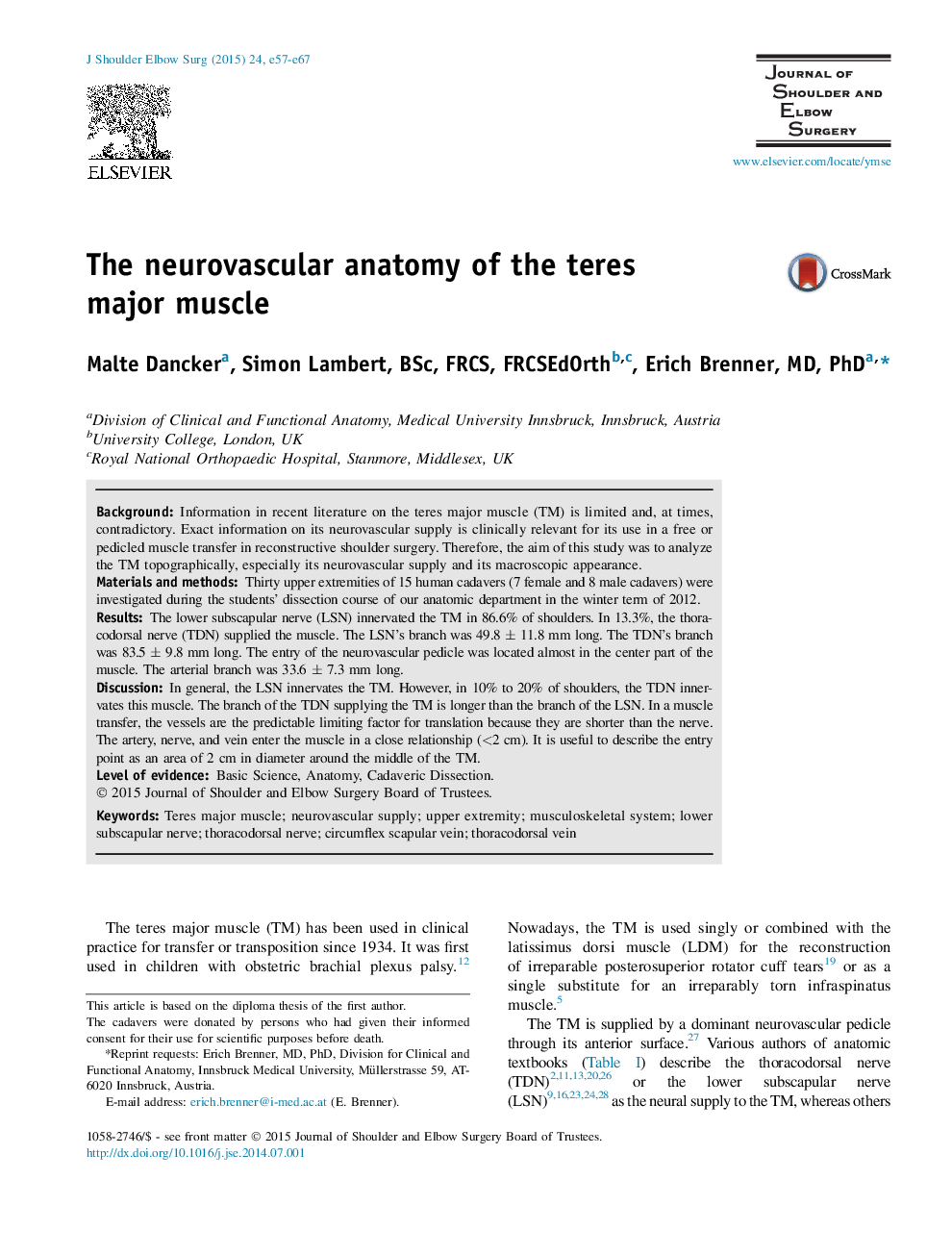| Article ID | Journal | Published Year | Pages | File Type |
|---|---|---|---|---|
| 4073521 | Journal of Shoulder and Elbow Surgery | 2015 | 11 Pages |
BackgroundInformation in recent literature on the teres major muscle (TM) is limited and, at times, contradictory. Exact information on its neurovascular supply is clinically relevant for its use in a free or pedicled muscle transfer in reconstructive shoulder surgery. Therefore, the aim of this study was to analyze the TM topographically, especially its neurovascular supply and its macroscopic appearance.Materials and methodsThirty upper extremities of 15 human cadavers (7 female and 8 male cadavers) were investigated during the students’ dissection course of our anatomic department in the winter term of 2012.ResultsThe lower subscapular nerve (LSN) innervated the TM in 86.6% of shoulders. In 13.3%, the thoracodorsal nerve (TDN) supplied the muscle. The LSN’s branch was 49.8 ± 11.8 mm long. The TDN’s branch was 83.5 ± 9.8 mm long. The entry of the neurovascular pedicle was located almost in the center part of the muscle. The arterial branch was 33.6 ± 7.3 mm long.DiscussionIn general, the LSN innervates the TM. However, in 10% to 20% of shoulders, the TDN innervates this muscle. The branch of the TDN supplying the TM is longer than the branch of the LSN. In a muscle transfer, the vessels are the predictable limiting factor for translation because they are shorter than the nerve. The artery, nerve, and vein enter the muscle in a close relationship (<2 cm). It is useful to describe the entry point as an area of 2 cm in diameter around the middle of the TM.
